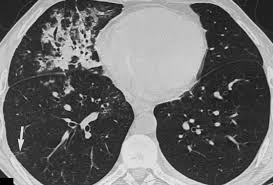Understanding Pneumonia: Causes, Symptoms, and Treatments

Introduction
Pneumonia is a significant health concern worldwide, affecting millions every year. It is an infection that inflames the air sacs in one or both lungs, which may fill with fluid or pus, causing cough with phlegm or pus, fever, chills, and difficulty breathing. The importance of understanding pneumonia lies in its potential severity and its role as a leading cause of death among children and the elderly. Global health authorities emphasise awareness of symptoms and appropriate treatment options, especially in light of the COVID-19 pandemic, which has heightened the focus on respiratory illnesses.
Understanding Pneumonia
Pneumonia can be caused by various infectious agents, including bacteria, viruses, and fungi. The most common type is bacterial pneumonia, often caused by *Streptococcus pneumoniae*. Viral pneumonia, frequently exacerbated by common viral infections like influenza, has also been a significant focus recently due to its association with COVID-19. Fungal pneumonia, while less common, can occur in individuals with weakened immune systems.
Symptoms of pneumonia can vary from mild to severe and typically include cough, chest pain, fever, and shortness of breath. While some may recover quickly, others, particularly those with underlying health conditions, may experience complications that require hospitalisation. Preventative measures, such as vaccinations against pneumonia-causing pathogens, are critical. The pneumococcal vaccine, in particular, is recommended for certain high-risk groups, including the elderly and those with chronic illnesses.
Current Statistics and Trends
According to the World Health Organization, pneumonia accounts for approximately 15% of all deaths of children under five years old, highlighting the need for ongoing public health efforts. Furthermore, data from Public Health England indicates an increasing trend of pneumonia hospitalisations, particularly among older adults, which is further complicated by the impact of the pandemic.
Conclusion
As the global population ages, the incidence of pneumonia is expected to grow, making it vital for individuals to be informed about its symptoms and preventive strategies. Early diagnosis and treatment remain crucial in reducing morbidity and mortality associated with pneumonia. With ongoing research and vaccination efforts, it is hoped that the burden of this respiratory illness can be significantly decreased in the coming years.









